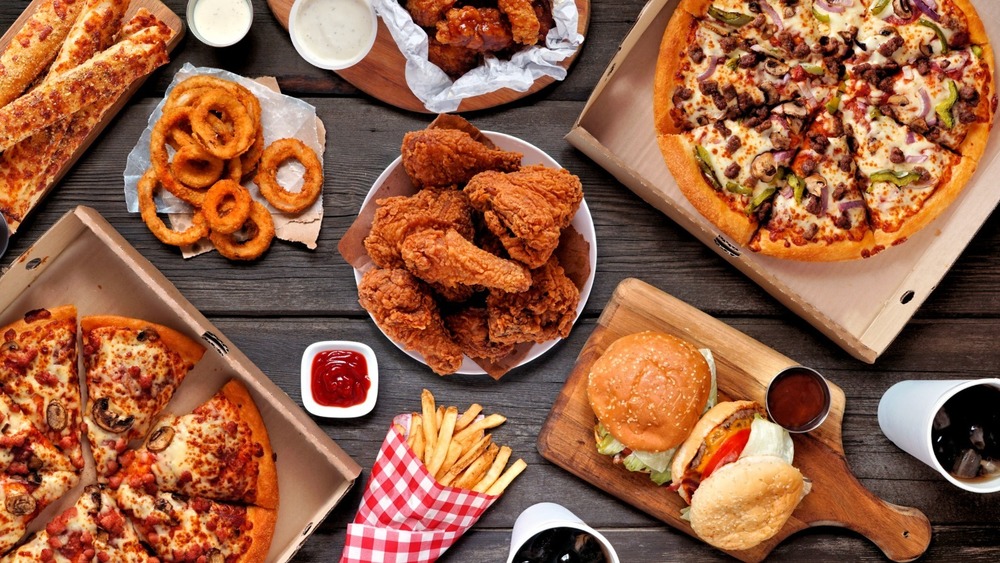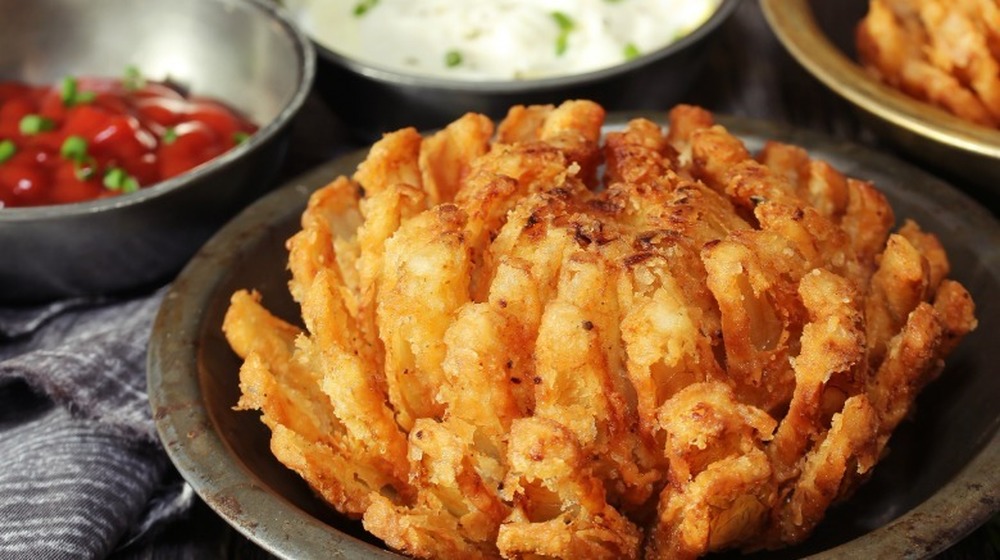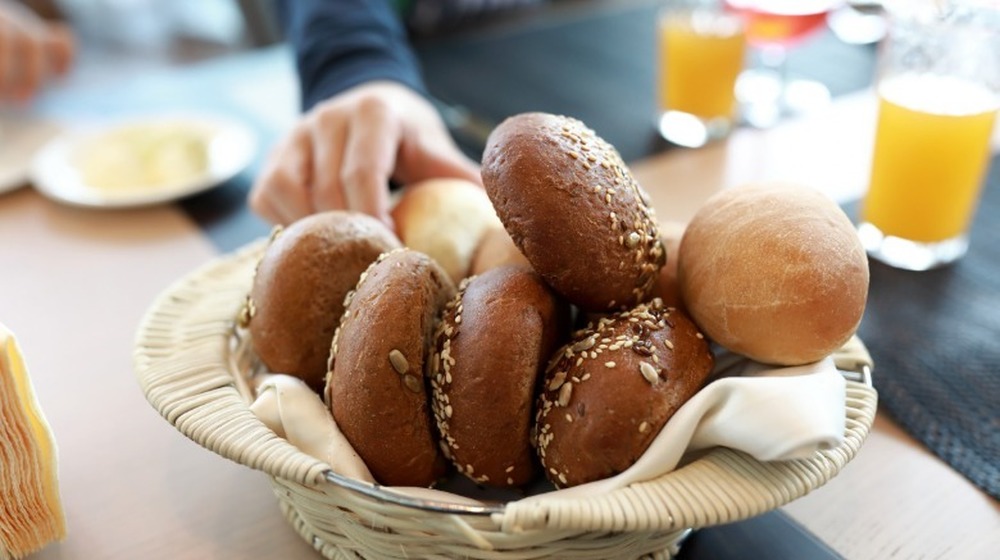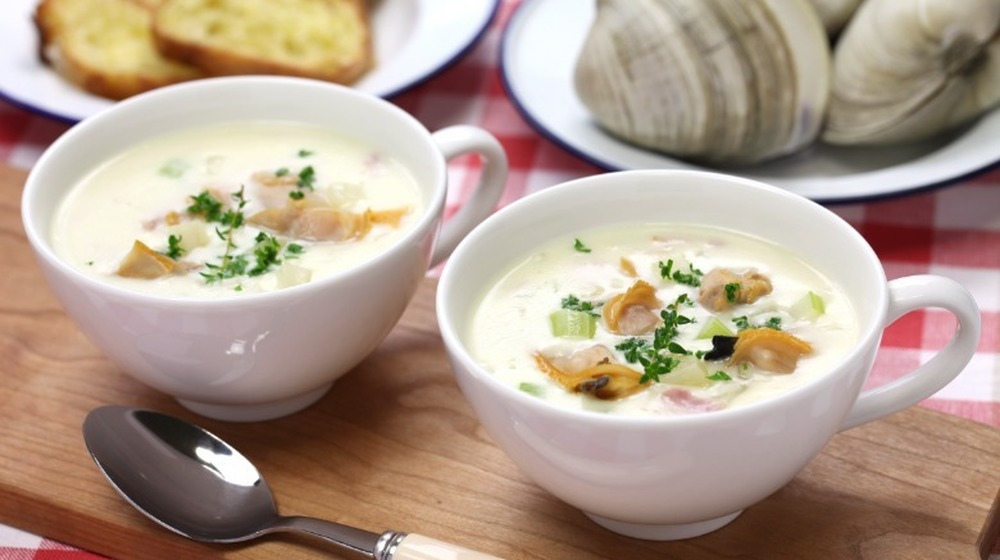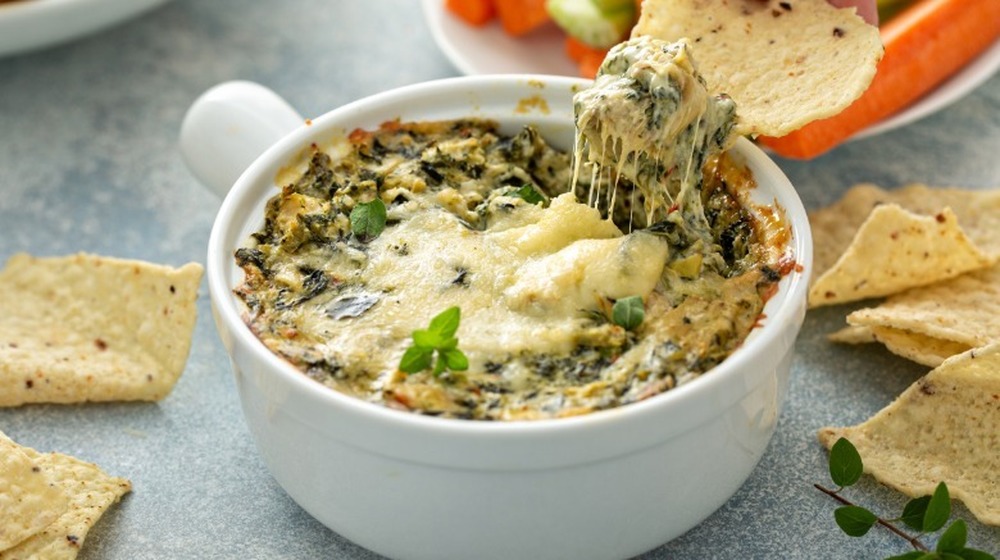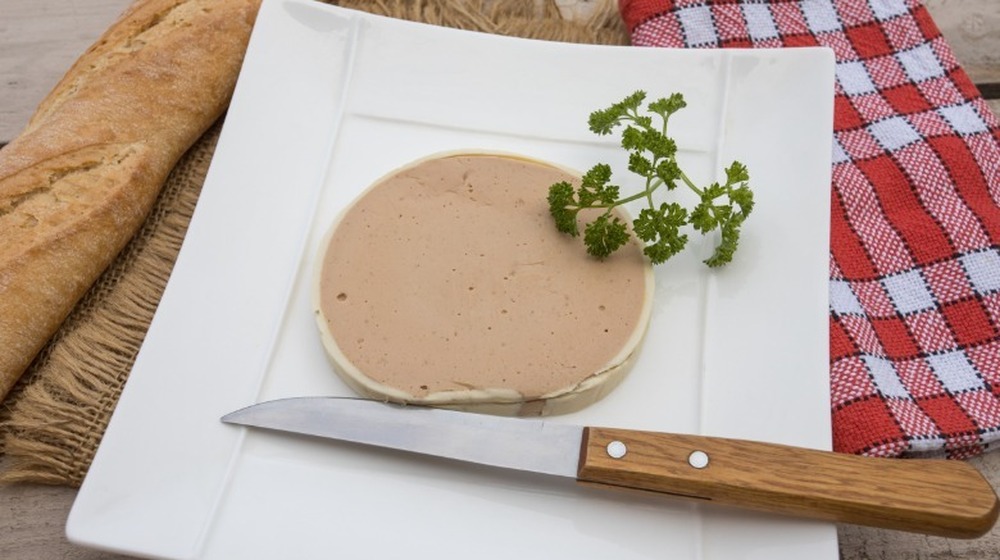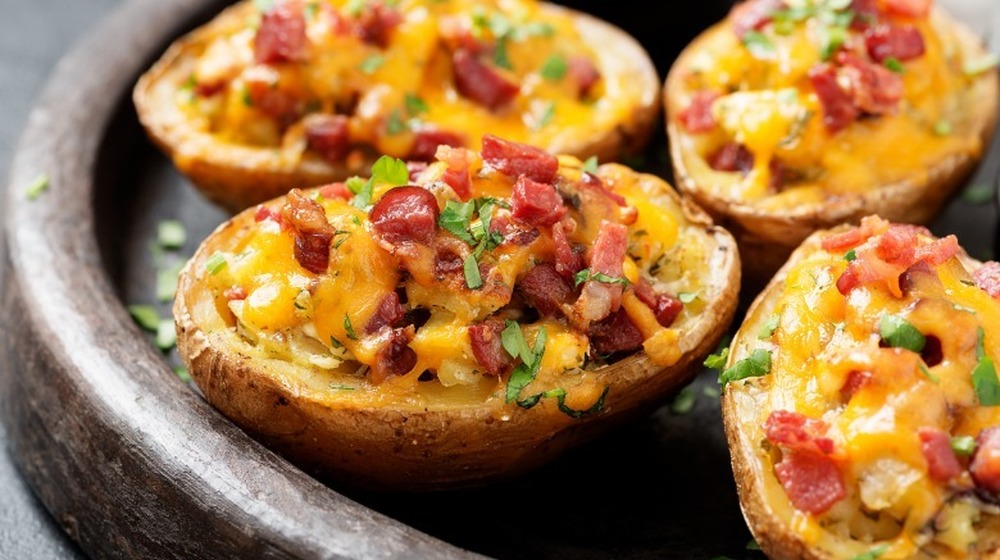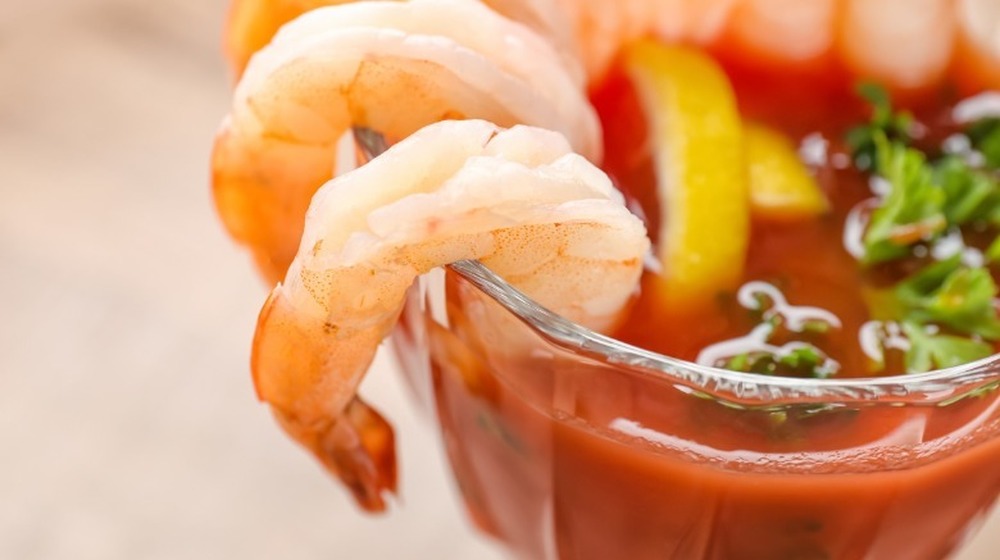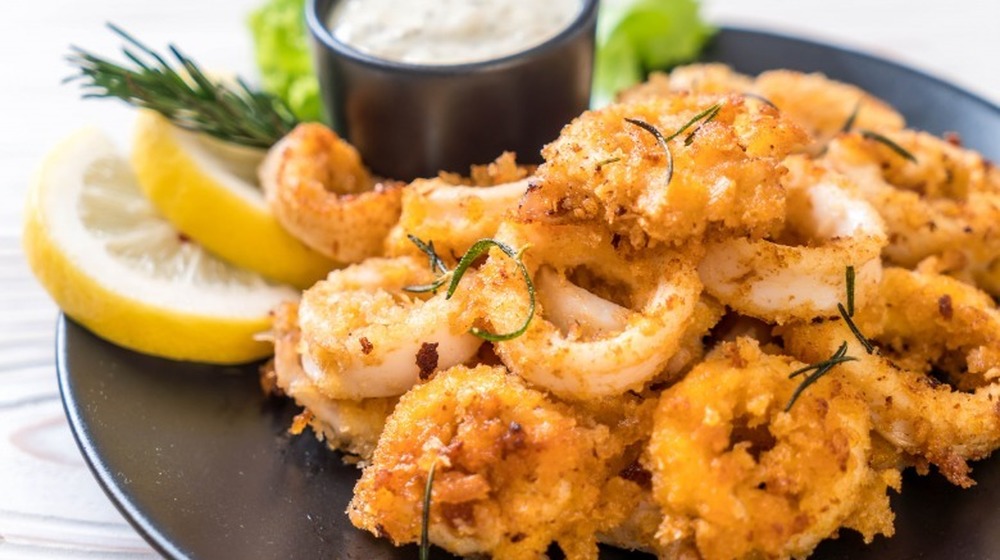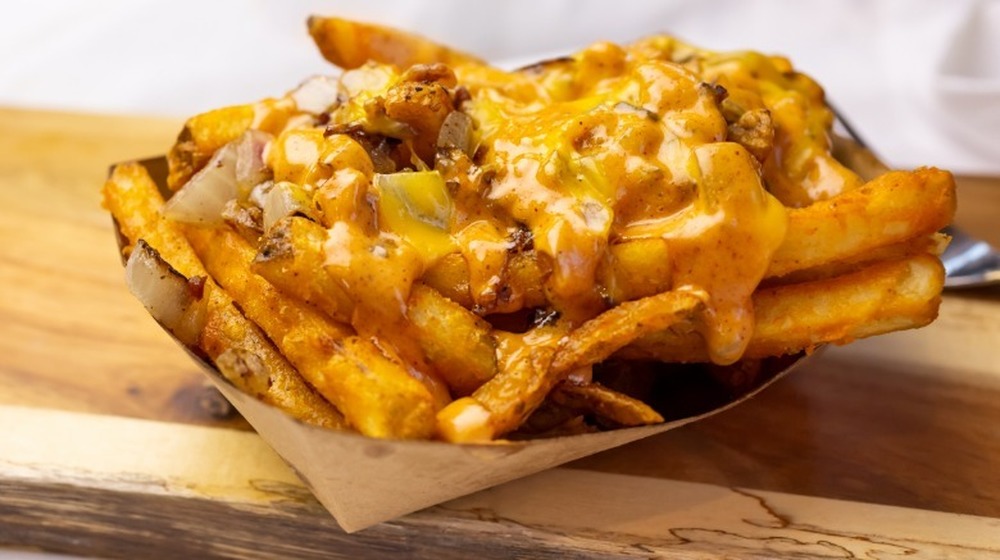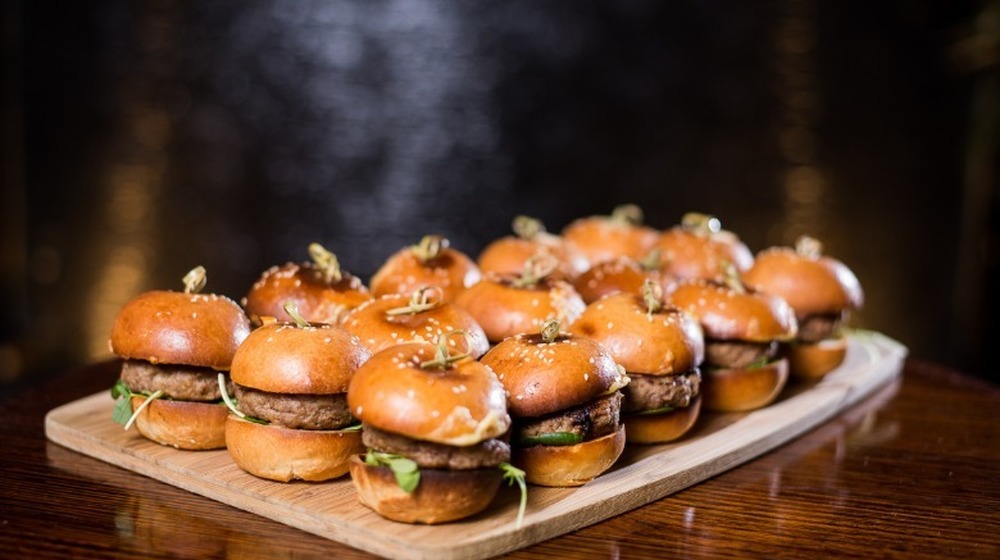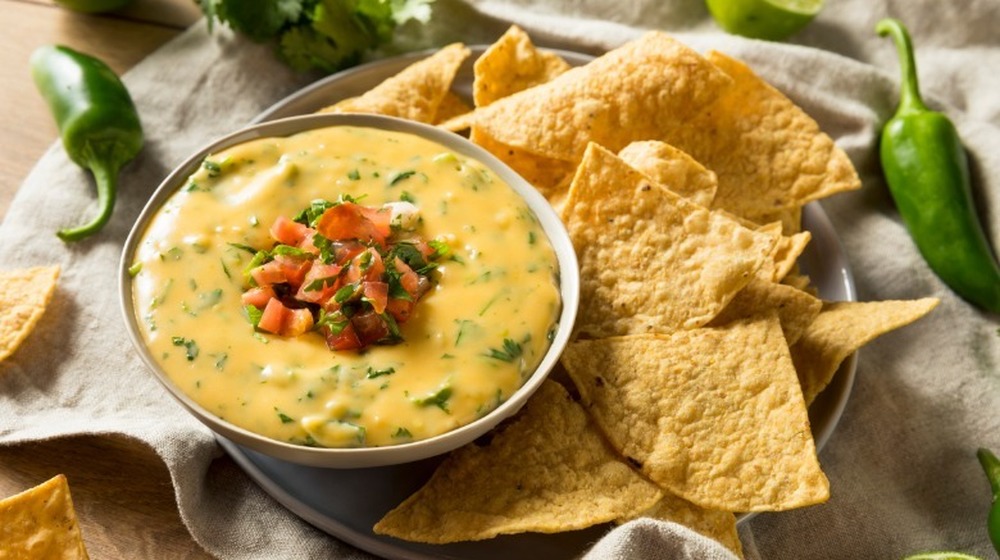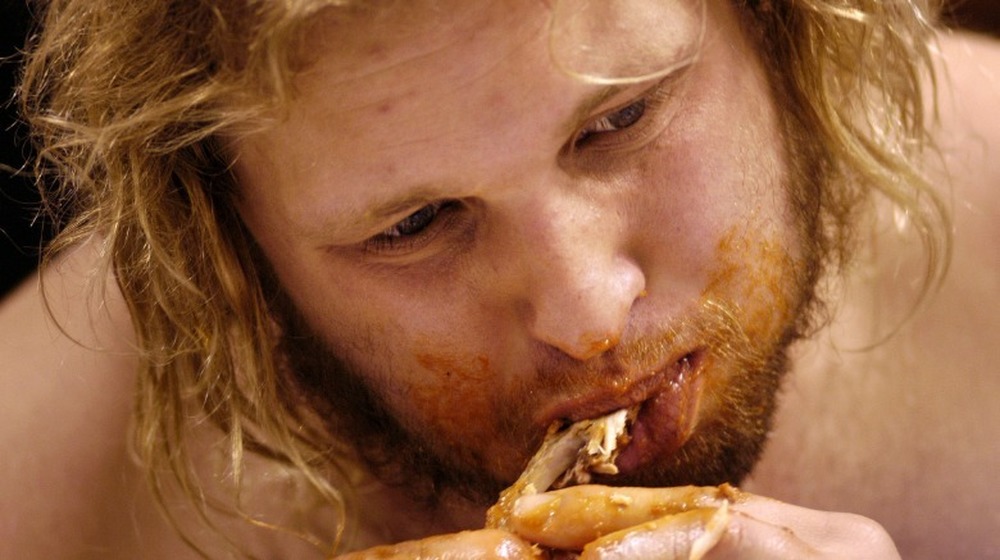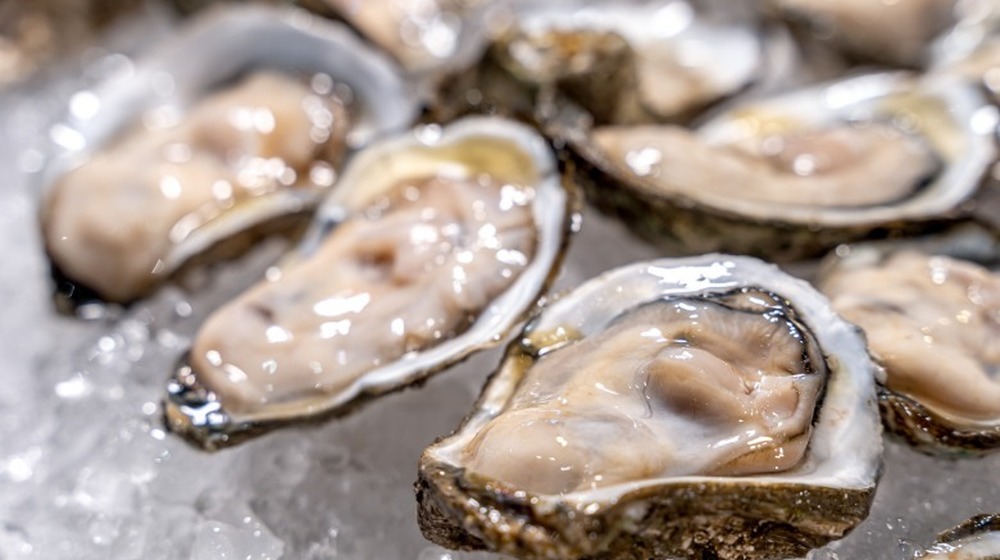Appetizers You Should Absolutely Never Order
Every restaurant has their own unique way of cooking up classic dishes, including fan-favorite appetizers, but not every meal is created equal. Whether it's the flavor, ingredient list, or nutrition facts, in the food world there are many wins when it comes to great starter dishes, and unfortunately, there are even more losses.
Like most of the items on this list, the foods that taste better are usually the worst for us. We don't eat Krispy Kreme doughnuts because they are healthy — we gobble up those sweet suckers because they are straight up delicious. But every ounce of food we put into our body should be consumed with caution. The age-old saying "you are what you eat" is all too true, and routinely stuffing yourself with these delectable but dangerous appetizers can wreak havoc on your insides.
If you want to continue gratuitously gorging on ungodly amounts of fat-packed fried foods, sugar-heavy sauces, and contaminated seafood snacks, then avert your eyes from this article because it's about to get real. Here are some of the worst appetizers you should never order (but probably will).
Blooming onion
A blooming onion appetizer sounds harmless. Heck, it's a vegetable — how bad could it be? But throw this pungent produce in a deep fryer, add a bowl of dipping sauce, and you've got yourself one unhealthy fried starter dish. Containing thousands of calories and almost double the daily sodium intake, those watching their waistline will want to skip this onion appetizer. While the nutrition facts may vary from restaurant to restaurant, you'll be taking on much more than bad breath after consuming this appetizer. Routinely gorging on fried appetizers, like an onion blossom, will not only stuff your stomach before the main course, but it will also put you at a greater health risk for serious diseases. According to a BMJ study, frequent consumption of fried foods was closely "associated with an increased risk of type 2 diabetes as well as cardiovascular diseases."
In addition to the health risks involved in eating fried foods, horrifying amounts of calories are also lurking within this appetizer. While Chili's onion Awesome Blossom Petals and sauce appetizer skirts away with just under 760 calories, Outback Steakhouse offers a Bloomin' Onion appetizer that clocks in at almost 2,000 calories — that's nearly a day's worth of calories in the first course alone!
Any way you slice it, the onion blossom dish is bad news. If you simply can't resist the onion as a starter, try some fresh vegetables and a low-cal onion dip instead.
Bread basket
Nobody really likes the before-meal bread basket, unless you happen to be at Olive Garden of course — those breadsticks are irresistible. But the bread basket at most restaurants is usually filled with disgustingly dry loaves of mixed grain bread along with slabs of frozen butter to help you saturate the stale-tasting bread. This appetizer is a staple at many establishments, but still remains a relatively unhealthy start to your meal.
Offering little nutritional value and packed with tons of sugars and carbohydrates, bread has been an archenemy of dieters and health-conscious foodies for decades. White bread proves even more dangerous as it's made with refined flour, which offers even less nutritional value than other breads. Erin Palinski-Wade, RD, author of Belly Fat Diet For Dummies, told Everyday Health that "when a grain is refined, such as in the making of flour for white bread, the outermost and innermost layers of the grain are removed. This removes the fiber and some (25 percent) protein, leaving behind the starch." Without fiber, bread is nothing but a carb-loaded calorie waster.
Aside from acting as a near-flavorless filler before your main course, according to one server, when restaurants are busy, they'll often take the uneaten bread baskets and serve them to other tables. "We'll just spruce it up a little and take it out to the next table," he told Reader's Digest. So skip the recycled bread and make room for something more worth your while.
Clam chowder
Clam chowder is a sketchy seafood appetizer that should be eaten at your own risk. This boiled clam and cream-based soup curdles easily when heated, and can quickly become a breeding ground for harmful bacteria if it's kept at improper temperatures. The Japan Today story surrounding 34 students who got horrendous food poisoning from clam chowder is enough to make us swear off this soup for good. Sounds like a lot of risk for little reward to us.
This seafood appetizer is also made with heavy cream, butter, and salted pork, all of which contain unnecessary amounts of calories, saturated fats, and sodium. Despite the Dietary Guidelines for Americans recommendation of limiting sodium intake to less than 2,300 mg per day (a teaspoon of salt), Americans eat on average about 3,400 mg of sodium per day (according to the FDA). One cup of clam chowder might only muster between 120 to 200 calories, but it contains around 871 milligrams and 1,001 milligrams of sodium –nearly half the amount of salt an adult should have in a day, according to Livestrong. No need to sacrifice your health for a few spoonfuls of chunky chowder.
Spinach and artichoke dip
If you think this dish tastes too good to be true, you are right. Spinach and artichoke dip tends to be a top choice to share at restaurants like the Cheesecake Factory and Applebee's, but add pita, chips, or baked bread and you'll be full before the main course arrives. Even Ruby Tuesday's version, which comes in under the average calorie count, still tortures tummies everywhere with 1,052 calories and over 1,600 mg of sodium.
Cream is one of the worst enemies of the wellness world. Dripping in saturated fats, the creams used in spinach and artichoke dip, such as cream cheese, mayonnaise, and sour cream, can cause your body's cholesterol levels to spike (according to Better Health). Dairy-loaded creams are best enjoyed in moderation, so it's best to skip on a cream-saturated starter snack like spinach and artichoke dip. Instead, swap the baked vegetable dip for a fresh spinach and fruit salad.
If you have an egg allergy, eat this appetizer with caution. A select few store-bought spinach and artichoke dips were recalled by the U.S. Food and Drug Administration (FDA) due to the use of undeclared eggs. If you have an egg-related food allergy and want to take your risk with this dish, have the chef confirm the ingredients.
Pâté
For those who aren't familiar with this French "paste" appetizer, pâté, also frequently called a terrine, is a gourmet dish made of ground meat and animal liver. Yes, you read that right: liver and animal parts. Seafood, beef, pig, chicken, or wild game meats like snipe, partridge, venison, and boar, are all pâté options. But whichever way you slice it, cooked animal parts and chopped liver all packed into a literal meat loaf served with scooping crackers sounds like a massively grotesque starter meal.
But this palate-killing plate does come with some history. Way back in the Middle Ages, this meat slab was common cuisine in the European countryside. According to iFood.TV, pâté came from ancient Rome. Later, it was often named after nobles of the time, such as "pâté a la mazarine," named after the French Cardinal Mazarine. The French quickly became fans of this appetizer and introduced the incorporation of herbs and spices, as well as a new ground mousse texture. Now the liver appetizer is most notably associated with wealthier culinary enthusiasts. But whatever fancy dining establishment you find yourself at, we recommend ditching this disgusting appetizer, unless you have a particular penchant for raw-tasting animals gizzards.
Loaded potato skins
Just the name of this appetizer makes us full. Potatoes alone are an extremely filling food, but add loads of calorie-heavy innards, cream, and dipping sauce, and you'll want to skip your main course and head straight for a nap. While potatoes may offer some potential wellness benefits, when served with dairy-heavy ingredients, like sour cream and cheese, they can quickly become a source of unsuspecting health issues.
Invented as a creative and cost-effective way to use discarded potato skins, this appetizer was rescued from the rubbish, tossed into a deep fryer and filled to the brim with cheese, bacon bits, sour cream, and green onions. The official loaded potato skin was first offered as an appetizer in the early 1970s at restaurants like The Prime Rib Restaurant in Washington, DC, R.J. Grunts in Chicago, and TGI Fridays, according to Eater. Since first hitting the market decades ago, these loaded taters continue to be a staple on restaurant tables across the country.
Those seeking an overwhelming amount of pre-dinner nosh can look no further. The loaded potato skin will fill your belly with all the gut-busting ingredients, along with a nauseatingly high calorie count, such as TGI Friday's whopping 1,510-calorie batch or Black Angus Steakhouse's 1,160-calorie serving.
Shrimp cocktail
If the thought of dipping one of these slippery crustaceans in a shared chunky cocktail sauce doesn't send you running, then the slurping and residual tail trash just might. Before you order your next round of shrimp cocktail, it's important to know just where your shrimp is coming from, and the findings may shock you.
According to the Southern Shrimp Alliance, shrimp is one of the most commonly consumed seafoods in the United States. This creepy-looking crustacean is offered in such excess that there is often little regulation on shrimp purchases from Thailand, Vietnam, and India, forcing the U.S. to import low-grade shrimp discards from the European Union and Japan. What's even more repulsive is that only 2 percent of imported seafood gets tested by the FDA, according to Prevention. Looks like high-quality restaurant shrimp may be harder to come by than we thought.
The planet will also thank you for limiting your shrimp cocktail orders. Before these ocean creatures gained obscene popularity on the restaurant table, shrimp was caught solely in the wild. Due to the high demand, shrimp farms began popping up to keep the shrimp supply cranking. As a result, entire forests are being destroyed in order to clear space for an ever-growing number of shrimp farms (via Prevention).
Next time you're faced with picking a starter plate, consider how your seafood appetizer may affect not only your palate, but also the planet.
Calamari
As taboo as fried squid sounds, this dish is actually a popular appetizer at many restaurant tables. Gaining initial popularity in Europe, calamari made its way to the States and has since become a common crowd-pleasing starter course across the U.S. But don't let this seemingly fresh seafood plate fool you: once you take the "healthy" squid and bread it, toss it in the fryer, and cover it in seasoning, this dish instantly turns into a saturated fat nightmare (according to Healthline).
The squid alone won't ruin your wellness routine, but the deep-fried goodness that coats each squid serving sure will. To be more blunt for the fryer fanatics out there, when food is fried, it absorbs all of the fat from the food's oils. This fat is what forks over so much flavor, but also serves up some unhealthy side effects. Consuming fat-laden food, like calamari, can lead to high cholesterol and increased risk of heart disease and stroke, according to the American Heart Association (AHA). When ordering an appetizer, stay away from the fryer. Try swapping your calamari for a seared ahi starter or low-calorie crab cakes.
Cheese fries
Have you ever heard of anyone having just one fry? This calorie-heavy appetizer, like Outback Steakhouse's Aussie Cheese Fries clocking in at a whopping 1,760 calories, may be an easy-to-share choice, but your entire table will be shoveling down cheesy fry after cheesy fry until all the fat-filled, greasy goodness is gone. You know you aren't doing your health any favors by feasting on fries. This appetizer is named after the devilishly delicious machine from which it was birthed. A regular order of plain restaurant fries, like the batch from Buffalo Wild Wings, comes in at just 420 calories. But add a heap of melted cheese and that modest fried potato snack becomes a colossal calorie meal.
Similar to some of the other appetizers on this list, the danger of this dish is hidden in the fryer. Fried really means fat, and folks who consume large amounts of these fried fats are put at an increased risk of Type 2 diabetes and heart problems, and could even shave years off their life, according to the Mayo Clinic.
If sharing a basket of fries is a must, spring for maple syrup sweet potato fries like the 650-calorie batch from Yard House. Sweet potatoes are excellent sources of Vitamin A, and are perfect for pumping up your potassium, magnesium, and fiber intake.
"Mini" burger sliders
Size does matter, and in this case, "mini" means more. Many restaurant patrons love appetizers advertised as "mini" for the supposedly smaller serving size. However, this "mini" burger dish may give you more than you bargained for, cooking up at least 1,200 calories from just four mini burgers.
Chili's takes the cake when it comes to mini burger bites, offering up to six sliders in their Triple Dipper appetizer, which clocks in at 1,820 calories. While there are slightly "healthier" slider offerings, like the Cheesecake Factory's Roadside Sliders, you're still looking at 800 calories and 1,720 mg of sodium for only four sliders, which doesn't include dipping sauce or condiments. And let's be honest, you won't be able to stop at two little sliders, and you're only climbing up the calorie hill from there.
If you're still in the mood for something small, try vegetable, chicken, or beef pot stickers, like BJ's Chicken Pot Stickers, which cost you only 400 calories for the entire plate — fast, easy, shareable, and only eight ingredients.
Chips and queso
Chips and dip may be one of the most common appetizer choices when dining out, but be wary of this seemingly harmless salty snack. There are tons of unsuspecting fats, carbs, calories, and of course, sodium lurking about, according to Eat This, Not That!
You may think the unhealthiest part of this appetizer is the cream and cheese-filled dip, but the health risks involved in consuming these chips will shock you. Made from thin potato slices, tortilla cornmeal, or white and yellow corn, chips are cooked and fried to crispy perfection in deep fat. During this process, the chips are often burnt to achieve that highly cherished crunchy texture. Unfortunately, these high temperatures cause a chemical reaction to occur, resulting in the production of a harmful chemical known as acrylamide, which could be linked to cancer. According to the FDA, during the cooking, roasting or frying processes, a natural reaction takes place between the foods' sugars and asparagine (an amino acid in plant-based foods like potatoes), which creates this scary acrylamide chemical.
Additionally, while a couple of corn chips and cheese sauce doesn't seem like much, an entire serving can cost you almost a day's worth of calories. Just one order of Chili's White Spinach Queso and chips comes in at 1,480 calories. Do your body a favor and cut this unhealthy appetizer from your order.
Chicken wings
We can already hear the slurping and finger-licking from here. Calorie count aside, this may be one of the messiest appetizer dishes out there. What could be more unappetizing then watching fellow diners covered in barbecue or hot sauce devouring sticky chicken wings like wild animals? The taste may be undeniable, but you'll have a hard time keeping up an appetite after sharing a batch of chicken wings with your table.
Whether you're at a sports bar or a more refined establishment, wings manage to make their way onto most menus. This chicken-based starter dish is usually not only fried, but also drenched in a sauce of your choosing, including barbecue sauce — which gets its sweet, tangy flavor from sugar!
A single roasted chicken wing contains only about 240 calories, according to the United States Department of Agriculture (USDA). But add some barbecue or hot sauce and ranch or blue cheese dipping sauce and you're looking at up to 1,280 calories, like this order of Red Robin Bone-In Bar Wings. Instead of wings, opt for buffalo-flavored cauliflower. This dish tastes just like your favorite-flavored chicken wings but with only 200 total calories.
Raw oysters
Gooey, salty slime balls from the bottom of the ocean? No thanks — we'll pass, and you should too. Oysters are a celebrated seafood delicacy all around the globe, but unless you watch your chef capture, clean, and serve your raw oysters, you should strongly consider skipping this appetizer.
Eating straight from the sea is always sketchy, and depending on the day of the week, your "fresh" fish may not be as fresh as you think. Cordon Bleu-trained chef, Mark Nichols, told Reader's Digest that he refuses to touch raw oysters if they've traveled over 100 miles, and advises that oysters can actually kill you if they aren't handled and stored correctly. Plus, many oysters are served with a lemon garnish, which could be covered in bacteria. Now that's enough for us to pass on this menacing mollusk forever.
If a seafood appetizer is what you crave, we suggest avoiding any uncooked items, as they can easily contract germs and harmful bacteria (via the CDC). No need to lose a forearm over this seafood starter snack, like this 71-year-old South Korean man (via Insider).
